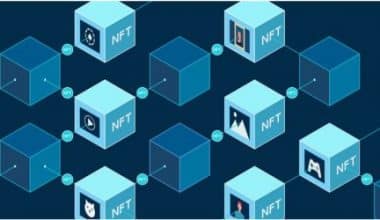Crypto staking is one of the most popular terms used in the crypto sphere yet the least understood. In other words, when it really comes down to it there are always a bunch of uncertainties to deal with. The basic questions like; What is Crypto Staking? How does it work? How do I stake crypto coins? Is crypto staking worth it? often has a way of showing up. Well if that’s the case with you, then, trust me, you’ve just found the answers to those questions as I will explain in detail what crypto staking is and how to go about it safely.
Overview
If 2020 was designated as the Year of Decentralized Finance (DeFi), then cryptocurrency staking must be recognized for its pivotal role in the rise of this new generation of crypto assets. Over the last few months, the industry saw a steady rise—including surges in the number of users staking crypto to receive fixed interest or yield incentives, with the exception of market-leading Bitcoin. This, however, corresponds with the statistics stating that over a billion dollars in crypto have been staked on Kraken’s platform alone, with Binance, Huobi, and other big exchanges also holding massive amounts of staked crypto. Meanwhile, the total assets invested in DeFi platforms in January 2021 equal $21-$23 billion. Clearly, we have an extremely high demand for staking on our hands.
But as tempting as those statistics sound, you do not want to dabble into something you have zero knowledge about. That would be a really bad move for a 21st Century Investor.
With that sorted out, let’s delve into the more pressing issues at hand…
What is Crypto Staking?
Staking is an activity in which a user locks or keeps funds in a cryptocurrency wallet in order to participate in the upkeep of a proof-of-stake (PoS)-based blockchain system. It is similar to crypto mining in that it assists a network in reaching an agreement while compensating participants.
The right to validate transactions is baked into how many coins are “locked” inside a wallet during staking. In addition to incentives, PoS blockchain technologies are scalable and have fast transaction rates.
What Crypto Coins can I Stake?
Due to the growing popularity of staking, users who want to make passive income from their idle crypto-assets have a plethora of possibilities. We’ll go over some of the most popular crypto coins that are now offering staking rewards:
#1. Ethereum 2.0
Ethereum 2.0 is one of the most popular staking choices, as it is the second-most popular cryptocurrency platform to date. Basically, if you own ETH, you can effectively assist the system thrive by becoming one of its early validators.
To stake on ETH 2.0, you must have a minimum of 32 ETH as well as the Eth1 mainnet client. Begin by going to the Eth2 LaunchPad.
Furthermore, if you’ve been following the 2020 DEFi explosive expansion, you’ll know that much of it may be attributable to the stunning potential profits that yield farming protocols operating as ERC20 tokens offer to investors. We’ll go further into that later in this post.
#2. Tezos (XTZ)
Tezos was born in June 2018, generating quite a stir as the largest initial coin offering (ICO) to date, with over $230 million invested. It employs a type of PoS known as liquid proof-of-stake (LPoS).
Tezos’ native currency is called XTZ, and the staking process is referred to as “baking.” Bakers are compensated with the native coin. On the other hand, malicious bakers face punishments by having their interests taken.
To become a Tezos staker/baker, a user must own 8,000 XTZ tokens and run a complete node. Third-party platforms, thankfully, have arisen, allowing small coin holders to delegate modest XTZ amounts and share baking benefits. The annual percentage yield on XTZ staking runs from 5% and 6%.
#3. Algorand (ALGO)
The primary goal of Algorand (ALGO) is to promote low-cost cross-border payments. The network requires stakes for security and transaction processing because it is a PoS protocol. It employs the pure proof-of-stake (PPoS) consensus technique, as opposed to Tezos. Stakeholders, however, are still required to run full nodes.
Furthermore, there are third-party supporters of ALGO delegation. Basically, staking rewards on these networks range between 5% and 10% per year.
However, it is important to note that the incentives are determined by the platform chosen. Binance Staking, for example, provides an APY (annual percentage yield) of 8%.
#4. Icon (ICX)
ICX, a complicated Korean blockchain project provides another platform that supports staking natively. Icon, on the other hand, varies from Algorand and Tezos in that it employs the delegated-proof-of-stake (DPoS) consensus process. In this arrangement, a small number of users discover new blocks and validate transactions, while others delegate their currency to these entities.
Icon has its own native token, ICX. The annual staking incentives on ICON range between 6% and 36%.
Advantages of Staking Crypto
The following are some of the benefits of staking cryptocurrency:
- It’s a simple way to make money off your cryptocurrency investments.
- Crypto staking does not require any special equipment, unlike crypto mining.
- You’re contributing to the blockchain’s security and efficiency.
- It is less harmful to the environment than crypto mining.
But the major benefit of staking is that you earn additional cryptocurrency, and interest rates can be quite high. You may be able to earn more than 10% or 20% every year in some instances. It has the potential to be an extremely profitable investment. And all you’ll need is crypto that follows the proof-of-stake concept.
Staking is another way to show your support for a cryptocurrency’s blockchain. Staking is used by these cryptocurrencies to verify transactions and keep things running smoothly.
Drawbacks of Crypto Staking
There are a few risks to be aware of when staking crypto:
- Cryptocurrency values are highly volatile and can plummet dramatically. If the value of your staked assets plummets, any interest you earn on them may be wiped out.
- Staking can necessitate the locking up of your funds for a set period of time. You won’t be able to do anything with your staked assets during that time, including selling them.
- If you want to unstake your cryptocurrency, you may have to wait seven days or longer.
- The most significant danger associated with crypto staking is that the price may likely fall. If you come across coins with unusually high staking reward rates, keep this in mind.
- Many smaller crypto initiatives tempt investors with high yields, only to see their prices plummet. If you want to add crypto to your portfolio but don’t want to take on too much risk, cryptocurrency stocks may be a better option.
- Although the crypto you stake is yours, you must unstake it before trading it again. And so you don’t get any unpleasant surprises, find out if there is a minimum lockup time and how long the unstaking process takes.
What You Should Know before Crypto Staking
While staking your Bitcoin, Ethereum or USDT is simple, there are a few things to keep in mind before getting started.
#1. Platform Is Trustworthy
As previously said, you should always choose a staking platform with a strong reputation. This will safeguard your assets and ensure that you receive the staking returns that have been advertised.
#2. Examine the Platform’s Repute by Reading Reviews
You should also consider the company’s history, as well as the backgrounds and experience of its staff members.
This is also the perfect time to examine how the platform generates cryptocurrency in order to pay you interest. The platform should offer a trustworthy approach that has been demonstrated to work and is not too risky.
#3. Term of Locking
Every staking system is a little bit different. Some will ask you to lock up your bitcoin for a specified period of time, which means you won’t be able to withdraw it during that time. Others will give you the option of choosing your lockup duration or perhaps opting out entirely.
Consider how long you can go without your crypto before deciding on a lockup period. Consider your long-term goals and whether you want to be able to trade or buy something with them. This is less critical if it is a long-term investment and you have no urgent goals; however, you should still account for potential changes in your decision.
#4. Rates of Interest
You should also think about the interest rate for the platform you’ve chosen, as this has a direct impact on the results of your staking rewards calculator. A higher interest rate means more money in your pocket. You should also consider the frequency with which that interest rate is compounded. You should look for an account that pays daily compounding interest.
What to Expect in Terms of Earnings
If you keep your bitcoin for a longer period of time, the best platforms will provide you with a higher interest rate. This means you should experiment with a crypto staking calculator to find the best balance for you between a high-interest rate and a manageable lockup term. The following are a couple of crypto staking calculators you could try out;
How to Stake Cryptocurrency in 5 Easy Steps
An investor must first pick where and what they want to stake before they can begin crypto staking. To get started, follow these five basic actions.
Step 1: Select a Cryptocurrency or Coin to Stake
To start staking crypto on your own, you must first determine which coin they wish to stake and then purchase that coin.
Step 2: Find Out What the Bare Minimum Staking Needs Are
Users of ETH, for example, must have a minimum of 32 ETH to begin staking.
Step 3: Get the Software Wallet for the Coin You Want
Choose and install a crypto wallet to store your staking coins in. This could entail going straight to the cryptocurrency’s primary website and downloading the associated wallet.
Step 4: Decide Which Hardware to Use
Users must have a consistent, uninterrupted internet connection in order to stake cryptocurrency. A normal desktop computer will most likely suffice, while a Raspberry Pi could save money on electricity.
Step 5: Get Staking Started
After selecting the hardware and downloading the software wallet, a user can begin staking crypto.
Tip: When a user owns the native tokens of the Tezos and Cosmos networks in a Coinbase wallet, for example, they can be staked automatically.
The exchange handles all the staking on the backend for individuals holding the necessary crypto in an exchange-hosted crypto wallet, and users only have to keep the coin in their wallets.
Where Can I Stake?
Considering the large number of users on their platforms, exchanges have naturally entered the staking business.
Traders can diversify their income streams and monetize their idle funds on exchanges by staking. The following are some of the most popular cryptocurrency exchanges that offer staking:
#1. Binance
By trading volume, Binance is the largest digital currency exchange. As a result, when it comes to staking through trading platforms, many investors put it at the top of their list. In accordance with this, the Binance staking service for Ethereum 2.0 launched in December 2020.
Furthermore, the exchange supports DeFi staking and accepts DAI, Tether (USDT), Binance USD (BUSD), BTC, and Binance Coin (BNB).
#2. Coinbase
Coinbase is another popular cryptocurrency exchange where you may invest in a variety of cryptocurrencies. Other currencies supported by Coinbase staking, in addition to ETH 2.0, are ALGO and XTZ.
#3. Cold/Private Wallets
This method of staking is also known as cold staking. However, a staker must keep staked crypto coins in the same address because moving them breaks the lock-up period. Eventually, they’ll lose their staking rewards going down this route.
The following are some of the most popular cold/private cryptocurrency wallets that support staking:
- Ledger – The industry leader in cold wallets is Ledger. The advantage of hardware wallets is that you can still keep full control of your coins while staking. In addition to security, Ledger allows users to stake up to seven coins at a time. Tron (TRX), ATOM, and ALGO are some of the cryptocurrencies that it supports for staking.
- Trust Wallet – Binance supports the versatile Trust Wallet as a private wallet. Users can generate passive income by staking XTZ, ATOM, VeChain (VET), TRX, IoTeX (IOTX), ALGO, TomoChain (TOMO), and Callisto coins (CLO).
- The first Bluetooth mobile hardware wallet is CoolWallet S. Through its X-Savings functionality, CoolWallet S allows stablecoin (USDT) staking in-app.
- Trezor – The world’s oldest hardware wallet also allows for the staking of some assets such as Tezos via thirty-party programs such as the Exodus wallet.
#4. Platforms for Staking-as-a-Service
Unlike cryptocurrency exchanges and wallets, which also serve as trading and storage platforms, staking-as-a-service platforms are solely dedicated to staking. However, in order to cover their costs, these platforms deduct a percentage of the rewards earned. Soft staking is another term for staking on these platforms.
Stake Capital – It allows you to stake Loom Network (LOOM), KAVA, XTZ, Aion (AION), Livepeer (LPT), and Cosmos coins (ATOM).
MyCointainer – When staking their virtual assets, MyCointainer customers can pick between Power Max, Power Plus, and Basic options. The staking charges are represented by the three tiers.
Basic users, for example, pay as little as $1 per month, whereas Power Max users pay more than $10 per month. With on-chain staking support, the platform allows for the staking of more than 50 cryptocurrencies.
#5. DeFi Staking
Maker (MKR)– The platform allows users to borrow stablecoins in exchange for a volatile cryptocurrency like Bitcoin. Because of its popularity, it has become one of the most prominent decentralized finance protocols on the Ethereum blockchain (currently ranked first in total volume locked (TVL) as of January 2021). Notably, DAI is the network’s primary stablecoin. As a result, yield farmers deposit DAI, which is then lent to borrowers, and they profit from the interest charged on loans.
Synthetix (SNX)– SNX is the native currency of Synthetix. The platform, as the name implies, is a tool for issuing synthetic assets, often known as Synths. Synths are virtual assets that are used to represent physical and real assets such as stocks, cryptocurrencies, and fiat currency.
Yearn Finance (YFI)– As a DeFi aggregator, the protocol was launched in February 2020. Consequently, rather than facilitating lending and borrowing, it directs deposited funds to platforms with the highest yields and lowest risk profiles. (Lowpricebud) For example, it divides funds between Aave and Compound whenever it determines that these two produce the most rewarding and least hazardous payouts.
Compound (COMP)– Compound allows users to borrow and lend a limited number of cryptocurrencies, including ETH, USD Coin (USDC), Basic Attention Token (BAT), Ethereum (ETH), and DAI. The platform makes use of lending pools and assesses interest on loans. Borrowers, however, must deposit a certain amount of supported coins as collateral, according to the protocol.
Crypto Staking Methods
The procedure of staking digital currency is determined by the staking option you choose. Cold staking, for example, differs from being a validator directly on a PoS network. Furthermore, staking-as-a-service platforms take a different path than third-party or exchange-based staking.
Investing in an Exchange
In this section, we will look at how to stake cryptocurrency via an exchange. Let’s choose Binance as our preferred platform and Ethereum as our cryptocurrency.
- To begin with , you must have a Binance account and some ETH currencies. Fortunately, because it is an exchange, you can convert your other cryptocurrencies to ETH.
- Navigate to Finance>Binance Earn>ETH 2.0 staking when logged in.
- It is important to note that staked ETH currencies have a lock-up duration of up to 24 months. Binance tokenizes the ETH that has been staked and pays rewards in the form of BETH.
- Click “Stake Now” and enter the amount of ETH you want to stake.
- Click the “Confirm” button.
- Review the terms and conditions in the second window that appears before clicking “Confirm” once more.
Investing in a Hardware Wallet
The method of staking cryptocurrency on a hardware wallet like Ledger is similarly simple.
- The first step is to download and install the coin’s (e.g., ALGO) Ledger software.
- Create a new account on Ledger Live and transfer the coins you want to stake.
- And that’s it!
However, there are some additional pieces of information you should know.
Starting out, you can use coins saved in your Ledger wallet, but you must manage the cryptocurrency using other wallet apps. Furthermore, staking with this formula follows the identical stages as described above, except that after step one, you choose a third-party crypto storage provider.
After that, you must transfer coins from your wallet to Ledger and begin staking. It is important to note that the third-party wallet manages your crypto assets.
Is Crypto Staking Worth it?

Just in case you still wonder if crypto staking is worth it, then you’ve not been listening well enough. With the preceding details in place, the question of if staking cryptos are worth it should no longer be on the table. The new question should be how much are you willing to risk? This is because as rewarding as staking coins in the crypto world sounds, it is often possible to get carried away at some point. Crypto staking carries high risk, thus it is critical to conduct a comprehensive study and invest carefully. So my advice is, do your research and tread with caution.
But as for whether or not staking coins in crypto is worth the stress, the answer is a simple yes—only if you’ve covered your bases.
What Is the Best Staking Crypto?
The following are some of the best staking cryptos;
- Ethereum (ETH)
- Polkadot (DOT)
- Tezos (XTZ)
- Cardano (ADA)
- Algorand (ALGO)
- Polygon (MATIC)
- Cosmos (ATOM)
What Is Crypto Staking?
Staking cryptocurrency is a method of verifying transactions. It entails committing holdings and confirming transactions on a blockchain network. It also enables members to profit from their investment in the form of passive income.
Is Staking Profitable?
The primary benefit of staking is that you earn additional cryptocurrency, and interest rates can be quite high. You may be able to earn more than 10% or 20% every year in some instances. It has the potential to be an extremely profitable investment. And all you’ll need is crypto that follows the proof-of-stake concept.
Can You Lose Crypto by Staking?
Yet, staking is not without risk. You’ll get incentives in crypto, a volatile currency that can drop in value. Occasionally, you have to lock up your crypto for a particular length of time. And there is a danger that you could lose some of the bitcoin you’ve staked as a penalty if the system doesn’t perform as intended
What Is the Safest Place to Stake Crypto?
We’ve listed some of the best sites to stake cryptocurrency in 2023 based on things like security, fees, ease of use, and openness. Binance, eToro, Revolut, Bitpanda, Kraken, LiteBit, CEX.IO, Coinbase, MyCointainer, Figment, Staked.us, and Lido are some of the companies on our list.






